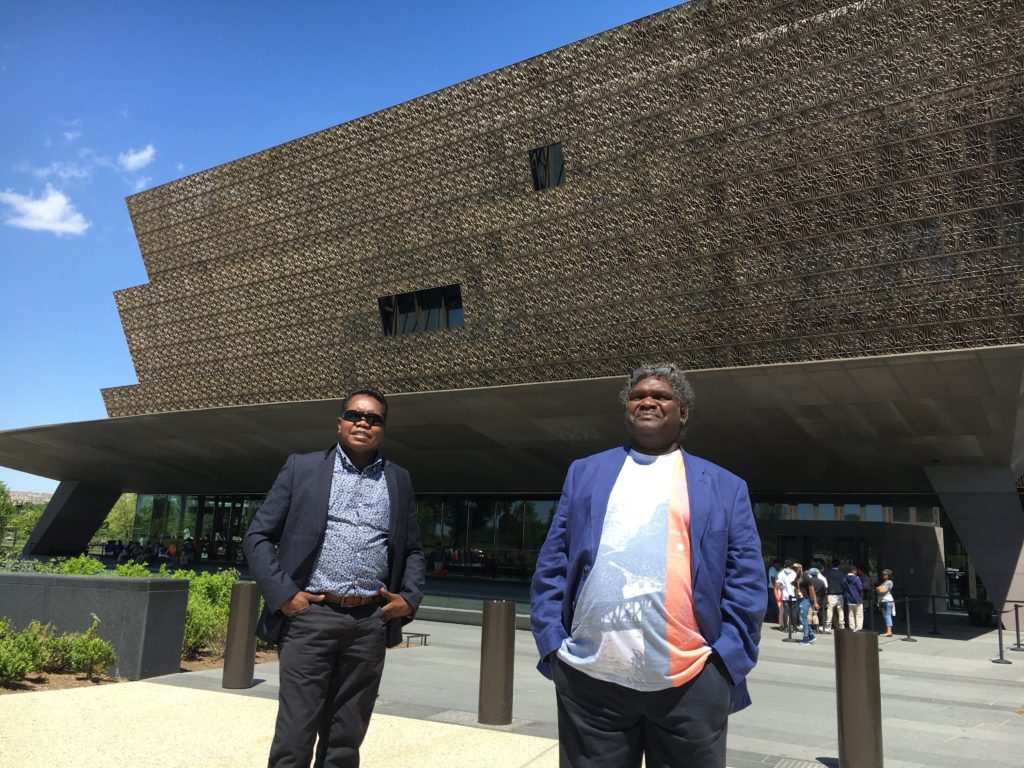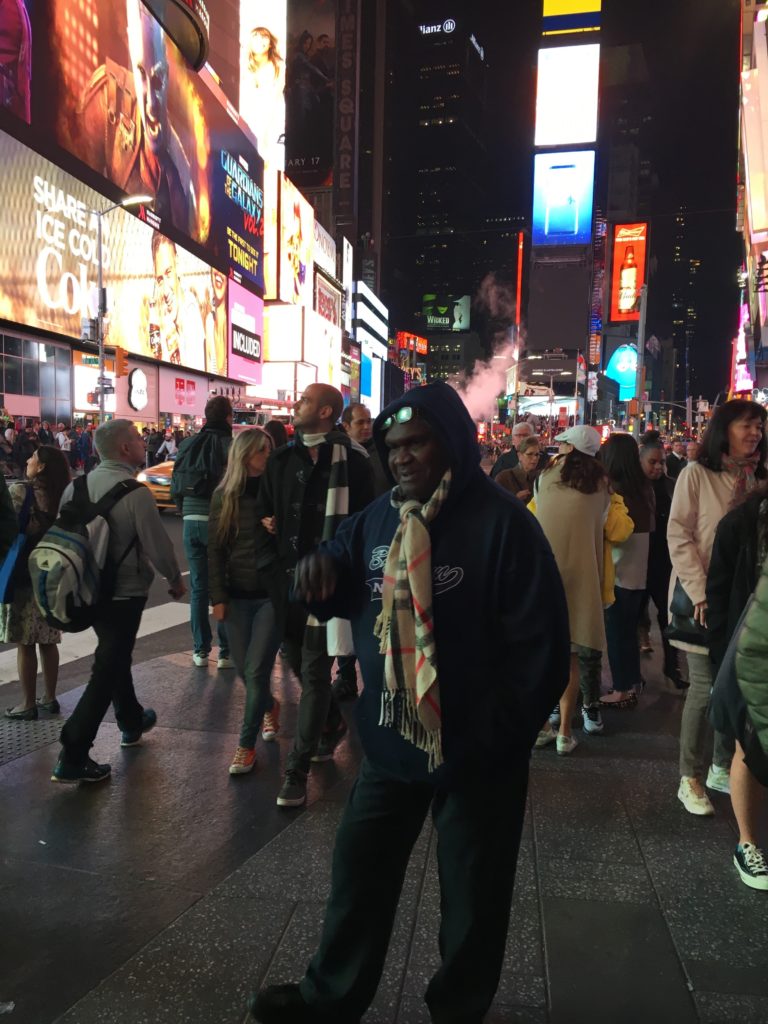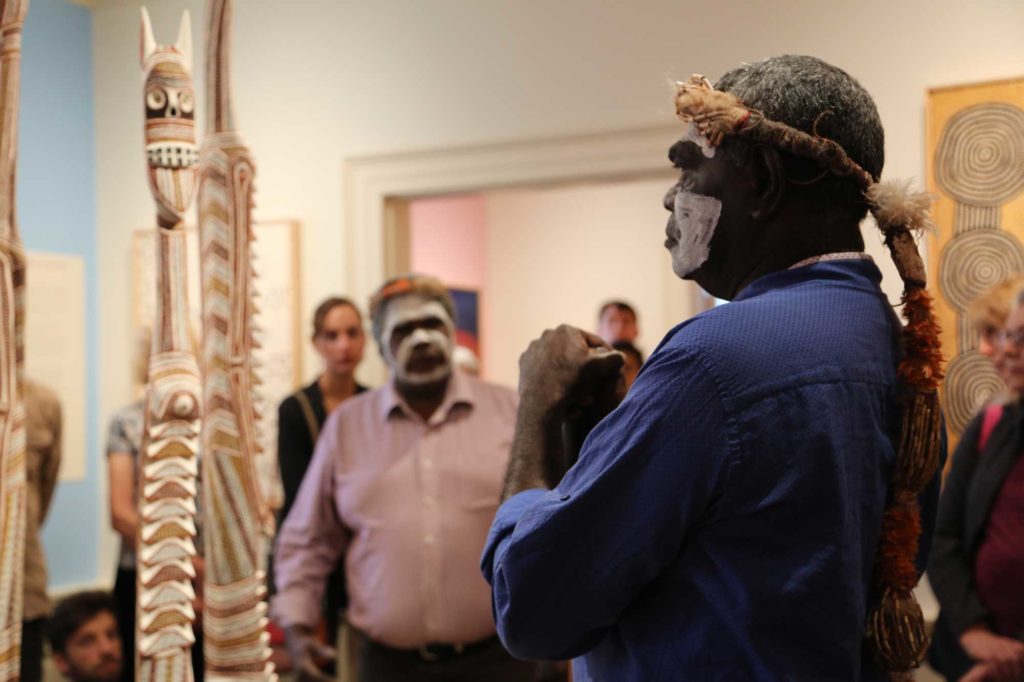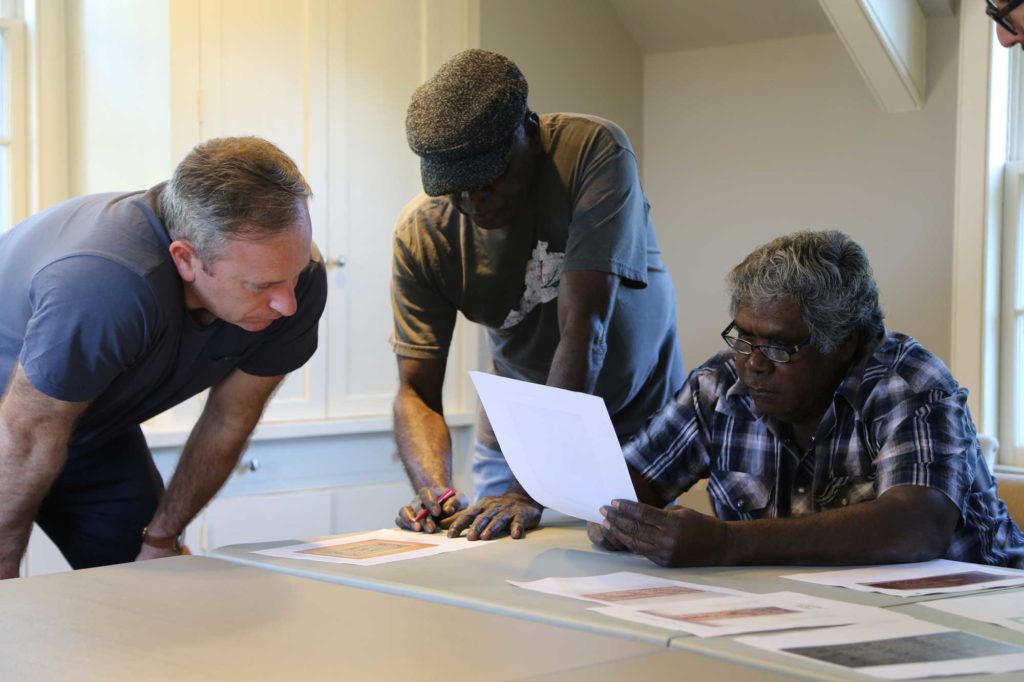Visiting Los Angeles with Djambawa Marawili, Wäka Munuŋgurr and Kade McDonald was an adventure. Our first stop was the Fowler Museum at UCLA where we were greeted by their extraordinary director, Marla Berns, and Terry Geis, Director of Education and Interpretation. The Fowler staff was completely on board with Maḏayin, having learned about its significance from an earlier visit with Wukuṉ Waṉambi and Yinimala Gumana. There is even a strong University of Virginia connection there because former Provost Gene Block has served as UCLA’s Chancellor since 2007. After our meeting, we all agreed that the Fowler where we wanted to show Maḏayin in Los Angeles.
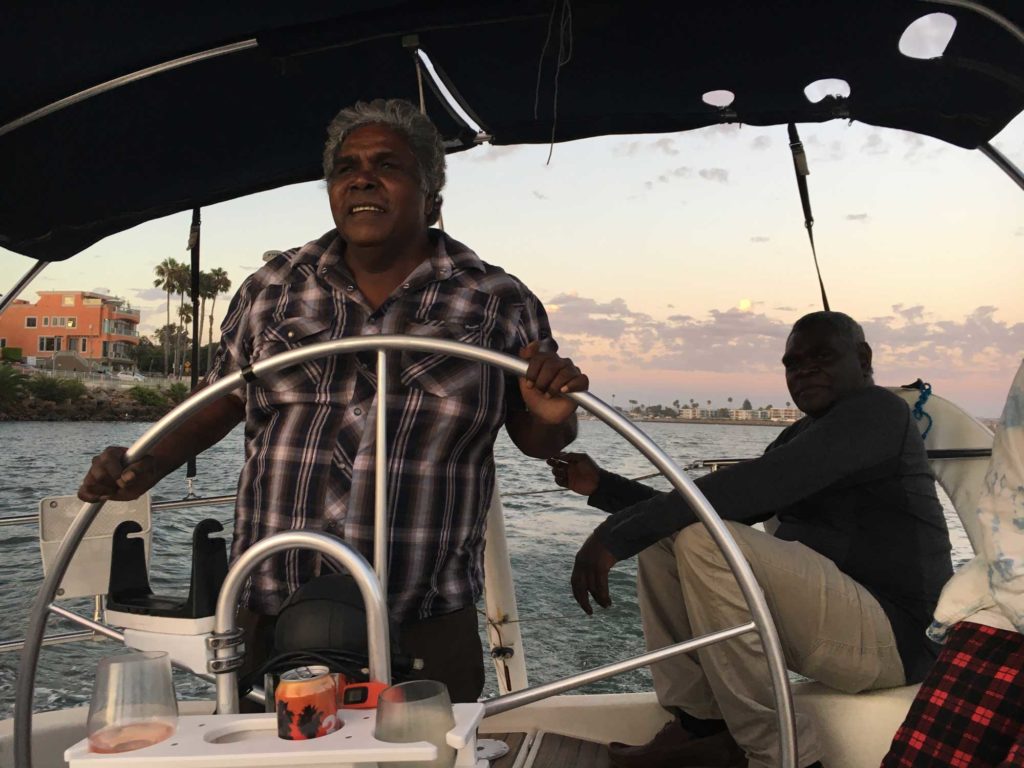
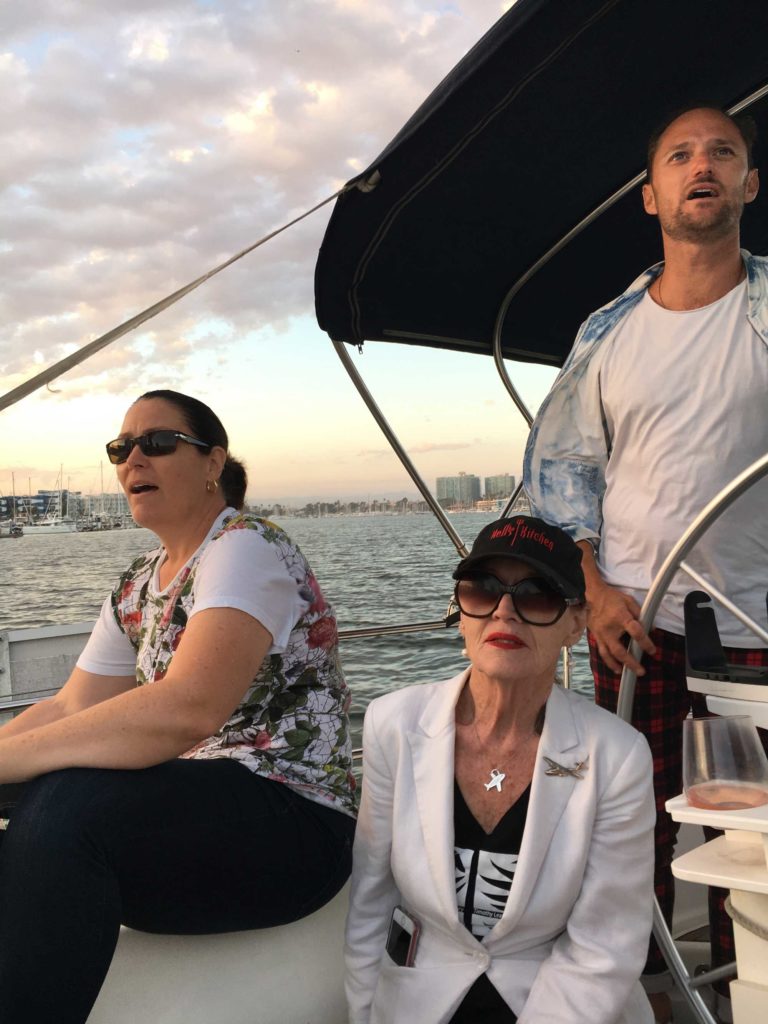
Of course, no trip to Los Angeles is complete without visiting the stars on Hollywood Boulevard, Grauman’s Chinese Theatre and the favorite Yolngu eatery – Pampas Grill Churrascaria at the Farmer’s Market
The most memorable part of the trip, however, was our visit with Kathryn Deyell, Australia Council’s North American liaison who had been instrumental in supporting Djambawa and Wäka’s trip. She invited us to take a sunset cruise on her sailboat at Marina del Rey. Our motley crew of Australians included filmmaker Catriona McKenzie, her son Callum and their friend pilot Eleanor Ruby Moon, and Kathryn’s husband, composer Cameron Deyell, and son Tana.
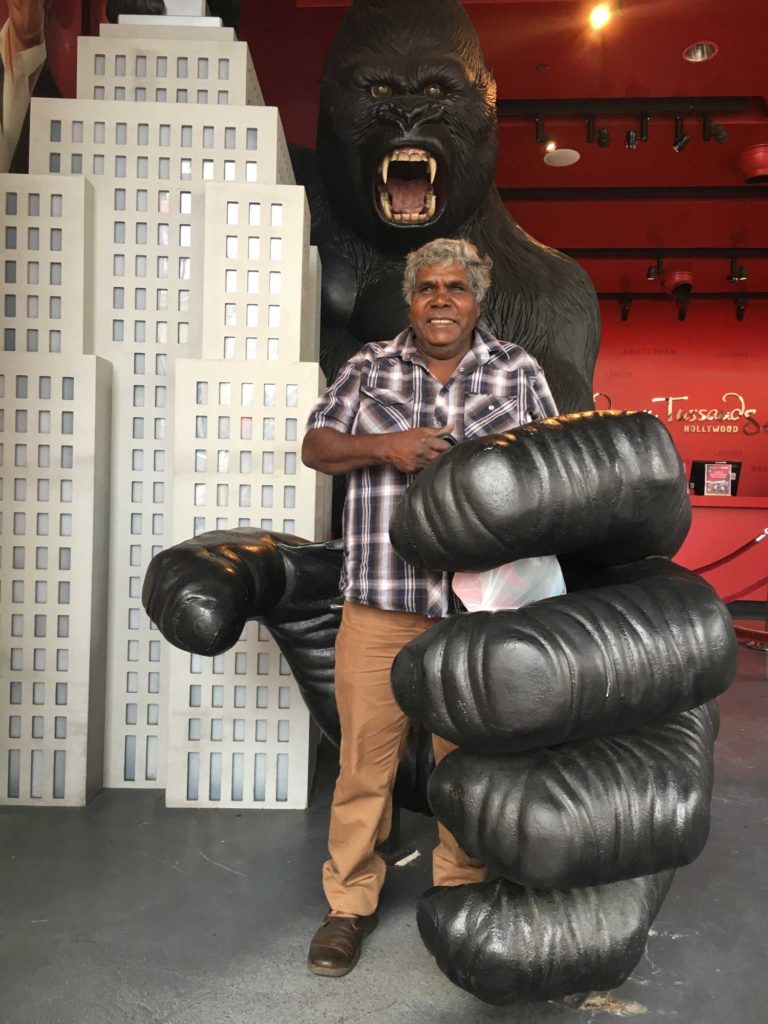
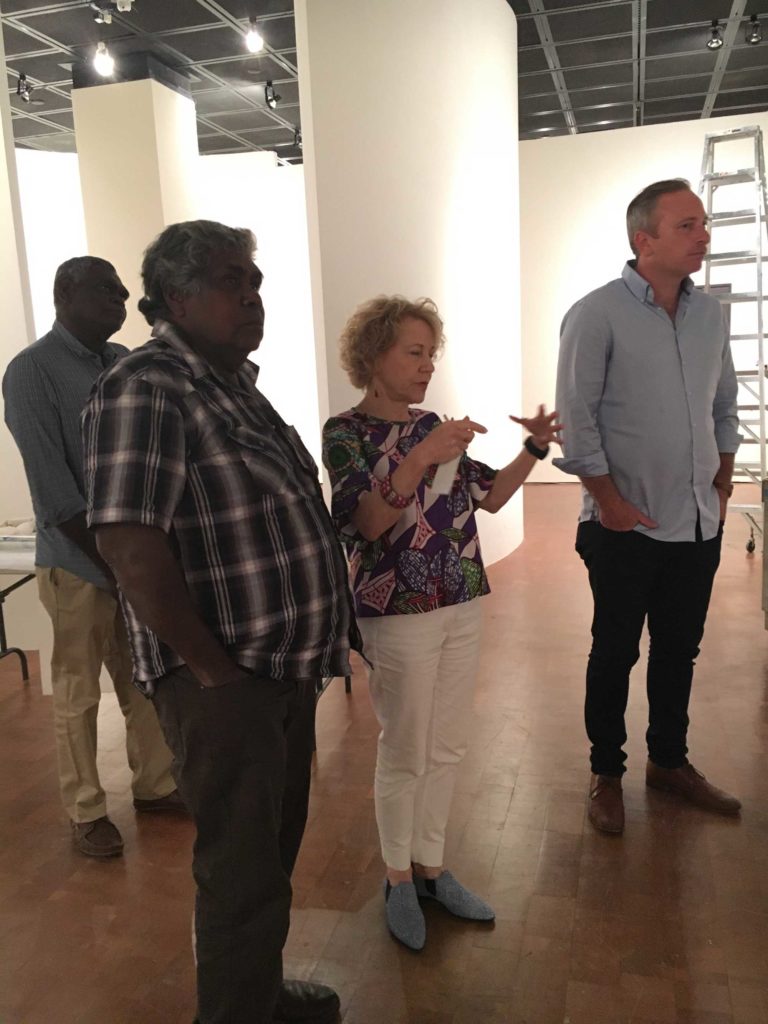
As Djambawa steered the boat past the breakwater, he and Wäka recalled their adventures sailing a dugout canoe from Baniyala to Groote Eylandt. These memories brought both of them such joy, evident in Djambawa’s radiant smile. Seeing the effect this voyage had on Djambawa, I felt tremendous joy too, and such gratitude to be along for the ride.
